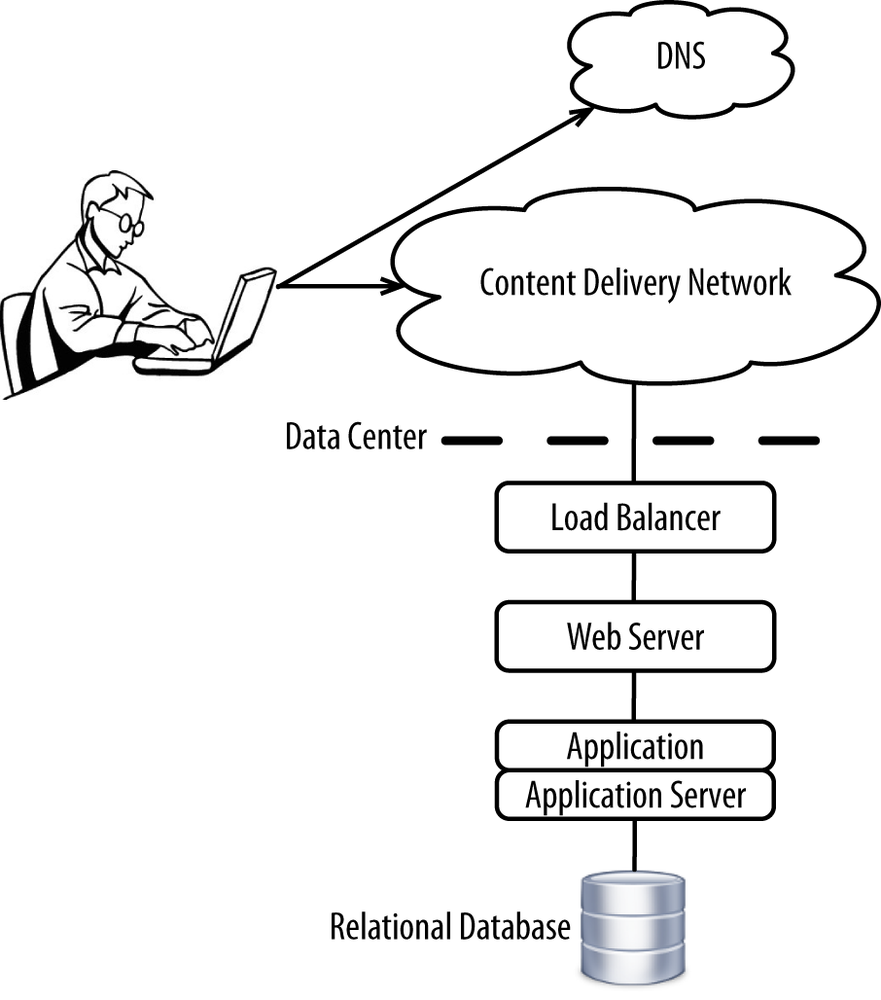Chapter 2. How Is Enterprise eCommerce Deployed Today?
Prior to ecommerce, the Web was mostly static. Web pages consisted of HTML and images—no CSS, no JavaScript, and no AJAX. SSL wasn’t even supported by web browsers until late 1994. Many leading ecommerce vendors, including Amazon, eBay, Tesco, and Dell.com first came online in 1994 and 1995 with static websites. Naturally, people coming online wanted to be able to transact. Adding transaction capabilities to static HTML was a technical feat that required the following:
- Using code to handle user input and generate HTML pages dynamically
- Securing communication
- Storing data in a persistent database
Today’s software and the architecture used to build these systems has largely remained the same since 1995. The innovations have been incremental at best.
Tip
With so much money generated by ecommerce, availability has trumped all else as a driving force behind architecture.
With the rise of omnichannel retailing and the increasing demands, the current approach to architecture is not sustainable. Let’s review the status quo.
Current Deployment Architecture
Most ecommerce deployment architectures follow the legacy three-tier deployment model consisting of web, application, and database tiers, as depicted in Figure 2-1.

The web servers make up the web tier and traditionally are responsible ...
Get eCommerce in the Cloud now with the O’Reilly learning platform.
O’Reilly members experience books, live events, courses curated by job role, and more from O’Reilly and nearly 200 top publishers.

